On the afternoon of November 21, the Hanoi Museum inaugurated three exhibitions: “Giang Vo Truong and the Collection of Weapons from the Le Dynasty Era,” “The Essence of Vietnamese Craft Villages through the Lens of Contemporary Interior Design,” and “The History of Earth’s Formation through the Collection of Fossilized Artifacts.”
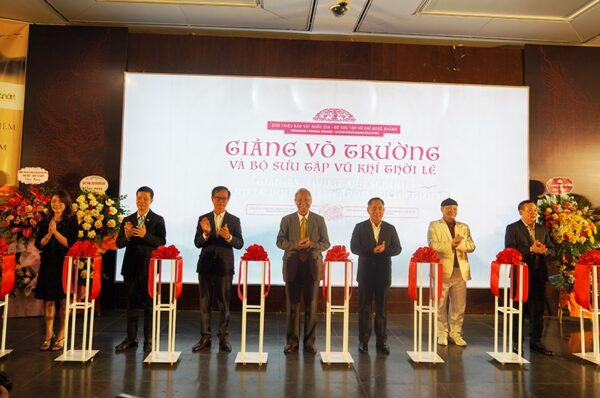
Dignitaries cutting the ribbon at the opening ceremony.
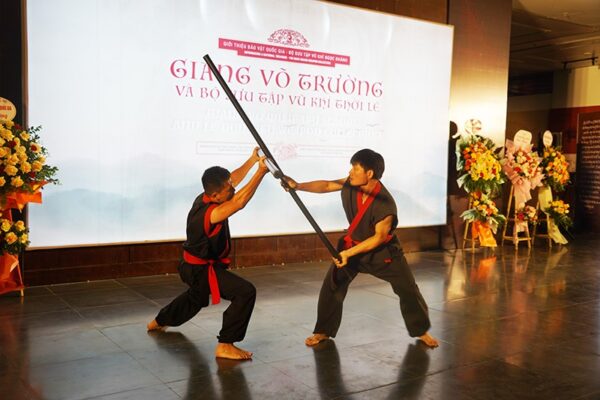
Traditional martial arts performance as part of the exhibition.
Speaking at the opening ceremony, Mr. Nguyen Tien Da, the Director of the Hanoi Museum, stated, “These activities are part of the series organized for the Hanoi Creative Design Festival 2023. Hanoi’s inclusion in UNESCO’s Creative Cities Network is a favorable step for the capital in positioning its brand and promoting its image across all creative cultural domains. This aligns with the 2030 United Nations Sustainable Development Agenda, fostering innovation in line with the development trajectory of globally advancing cities. Through organizing these specialized exhibitions, the Hanoi Museum not only showcases its role as an exemplary cultural creative space in the capital but also realizes its commitments and initiatives, integrating creative activities into every aspect of life.”
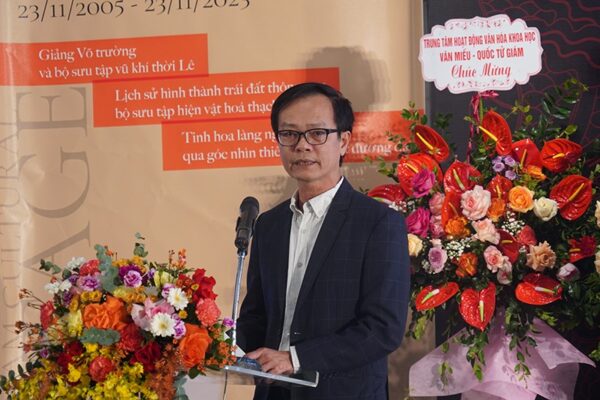
Mr. Nguyen Tien Da, Director of the Hanoi Museum, delivered a speech at the opening ceremony.
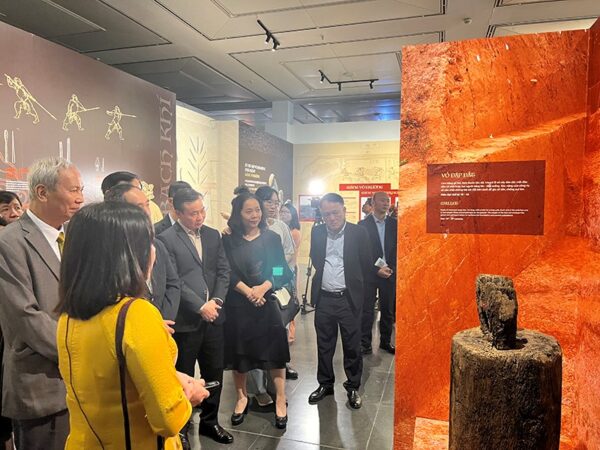
Visitors explored the exhibitions.
The exhibition on “Giang Vo Truong and the Collection of Weapons from the Le Dynasty Era” introduced visitors to over 200 artifacts, images, and documents related to Giang Vo Truong—an institution for training officials and soldiers for the imperial court—and various weapons from the Le Dynasty era. The highlight was the Ngoc Khanh weapons collection comprising 111 artifacts officially recognized as National Treasures by the Prime Minister under Decision No. 41/QD-TTg dated January 30, 2023. This comprehensive collection includes various types of firearms and artillery dating back to the 15th to 18th centuries, now preserved at the Hanoi Museum.
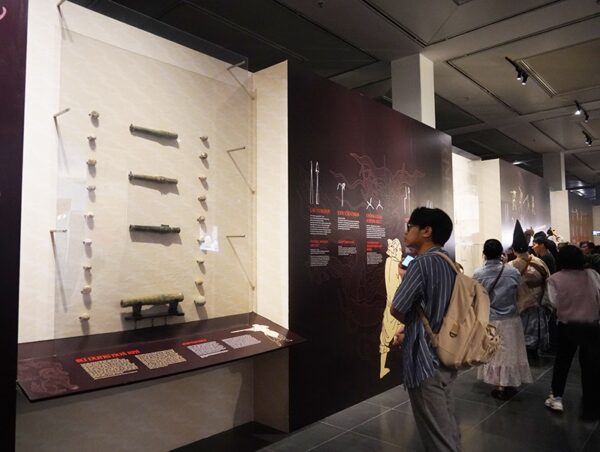
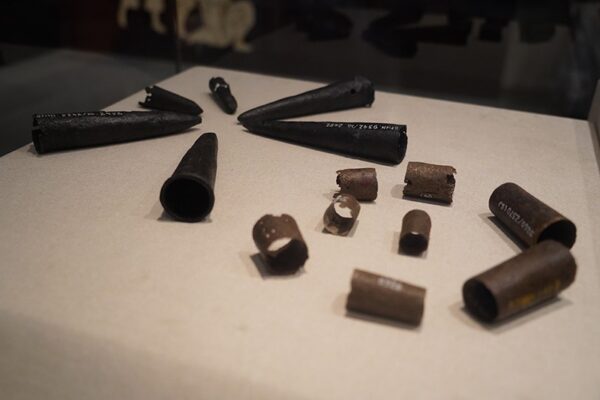
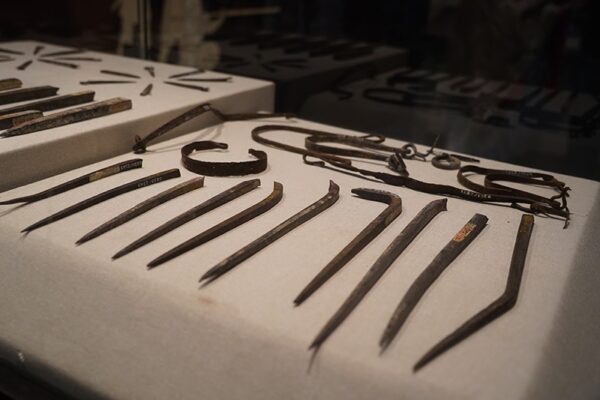
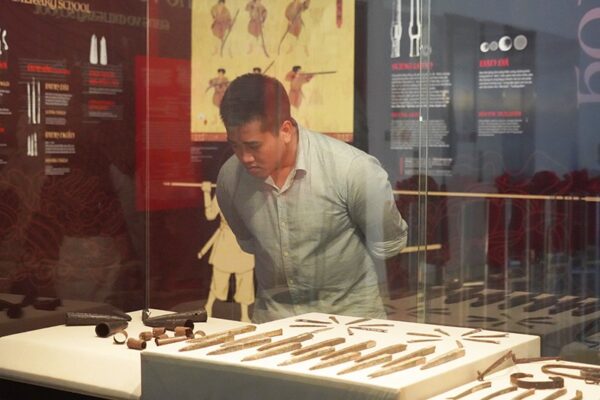
The exhibition unveils over 200 artifacts, images, and documents from Giang Vo Truong.
The specialized exhibition, “The Essence of Vietnamese Craft Villages through the Lens of Contemporary Interior Design,” aims to honor Hanoi’s traditional handicraft villages and, simultaneously, to foster connections in tourism and commerce while boosting creative design activities. Organized by the Hanoi Museum in collaboration with the Vietnam Interior Design Student Forum, this exhibit introduces 10 exemplary craft villages representing over 1350 traditional villages in the capital. The presentation showcases the creative design perspectives of students from nine Vietnamese universities and one university from the Kingdom of Thailand.

The featured exhibition spotlights 10 prominent Hanoi craft villages, including the silver crafting village of Dinh Cong, embroidery from Khoai Noi, woven bamboo from Phu Vinh, sculpture from Nhan Hien, shell inlay from Chuon Ngo, artistic wood carving from Thiet Ung, horn comb crafting from Thuy Ung, pottery from Bat Trang, silk weaving from Van Phuc, and folk painting from Hang Trong.
Additionally, the exhibition “The History of Earth’s Formation through the Collection of Fossilized Artifacts,” a collaboration between the Hanoi Museum and the Hanoi Fossil Museum, presents nearly 1200 valuable historical and scientific documents and artifacts. These items provide insights into the ancient ecological landscape, featuring fossilized specimens of animals and plants from both Vietnam and around the world. Many of these artifacts date back hundreds of millions of years, showcasing fossilized samples, human models, tools, and traces of ancient people left in cave sediments.
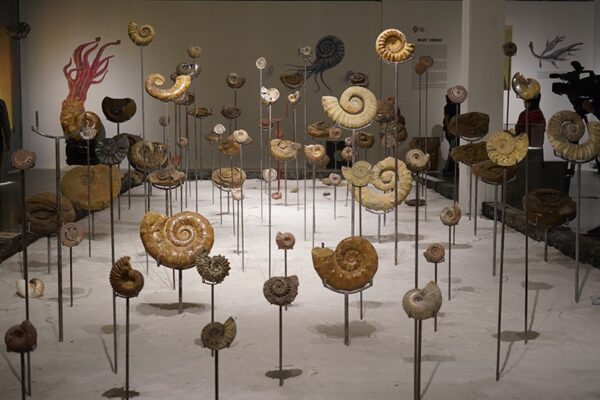
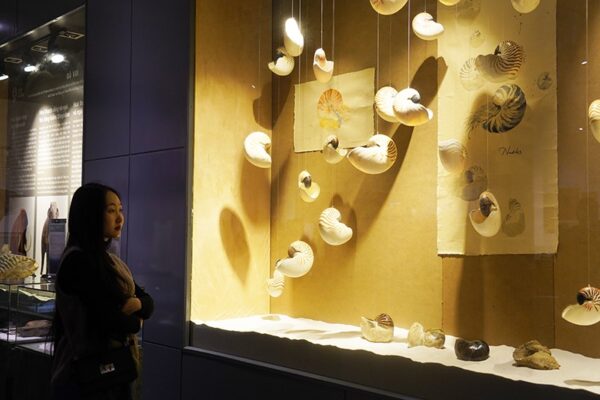
The “History of Earth’s Formation through the Collection of Fossilized Artifacts” exhibition is divided into five sections, offering collections of fossil specimens from different eras.
The presentation is an intersection of science, history, nature, and art, allowing visitors to experience films, appreciate painted works, and, most notably, examine fossilized specimens with ages spanning hundreds of millions of years. The exhibit also includes a 3D Mapping projection space illustrating the Earth’s geological history through captivating virtual reality technology.
Hoa An

